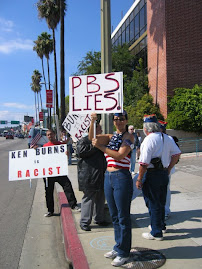
Image: Frank P. Barajas and Alice McGrath at UCLA 2006
The following is an address given by one of Ventura County's treasures. Alice is a central character within Luis Valdez's play and movie Zoot Suit, which is based on true events of the past. Alice inspired me to write an essay within the academic journal Aztlan titled, "The Defense Committees of Sleepy Lagoon: A Convergent Struggle against Fascism, 1942-1944."
fpb
Amigos805.com
Address by Alice McGrath 2009 Commencement at Wooster College, Ohio
“I was born in Calgary Canada in 1917. My Jewish parents had fled Russia because their lives were threatened by religious persecution — the pogroms that threatened our lives. They took me and my two sisters to Los Angeles and that’s where I grew up and did some important work in my life.
Because of this I know the immigrants’ story which is the story of our country. I know that many of you have experienced this or have parents or grandparents who are here in our country because of similar circumstances.
Your story, our story is the story of this amazing country, which has its ying and yang, its positive and negative, its Jekyll and Hyde.
In later years as I was growing up I made common cause with others who were outsiders, who in reality are also the life blood of America….
This is our story. This is what makes our country unique….all comers are/ should be welcome as Ms. Liberty invites us to be here on these shores, one of the tired, masses yearning to breathe free.
Years later I became a dreamer of what our country should be about, liberty, justice, social equality for all ….. This was considered dangerous and later in my life during the McCarthy era our government through the FBI considered how I might be deported even though I was the daughter of naturalized citizens and had a right to be here like most of you sitting here today.I have a very thick FBI file. I am most proud that one of the comments is that I had “no known weaknesses.”
When I reached the age of conscience and consciousness, realized that not everyone was treated fairly, justly or equally in our country. We did not meet our higher ideals and expectations for justice. I knew that Racism and injustice were the greatest evils; holding us back from all we should and could be.
I felt a kinship and became a fighter for the marginalized: blacks, Latinos, Asians, women, ….
I worked to organize labor unions, to get a fair day’s pay for a fair day’s work… What a concept!
I protested the against the incarceration of the Japanese in California after Pearl HarborAnd ….I was right… Not one Japanese resident of this country was ever convicted of treason…Later our Congress and even the Supreme Court of the United States had to recognize that we made a terrible mistake against the Japanese people including US Citizens born on US soil.
I ask you to remember that when our country is ready to question people of different ethnicity, religion or background…..please speak up for justice and our Constitution.
In 1944 I became the executive secretary of the Sleepy Lagoon Defense committee….22 young Mexican American men were wrongfully accused of murder. They were convicted in the press and in the court because of their ethnicity.
Alongside their attorneys, I fought the prejudice and ignorance which accused them of being born to be bad; sentiments fed by the racial prejudices of the day. After a long struggle in the courts, with the help of the public, they were released from prison….
This was one of my proudest and happiest days in my almost 93 years.
But I did not rest and went on to take 86 trips to Nicaragua during the contra war years bringing humanitarian relief and promoting a dialogue and understanding between the people of our countries.
I worked later on to organize the Ventura County Bar’s free legal services by volunteer attorneys to those without the means to get their day in court.
Oh yes, and I taught self defense to women and could flip many of you on your back, back in the day….
During my life, I have had the pleasure and honor of knowing intellectuals who shaped our country.
WEB Dubois, the author of the Souls of Black Folks, helped me understand that I had to pace myself. That my passion for social justice should not burn me out, that I should take time to enjoy what life has to offer and to know that tomorrow is another day to fight on. Please do the same…
I knew Carey McWilliams, an important fighter for civil rights for migrant workers and others; get to know who he is… We both knew that our country needed to put an end to racism which is a continuing scourge of our planet.
In 1944 he asked me to be the secretary of the Sleepy Lagoon Defense committee for those wrongfully accused young men. As a young woman without a college degree or relevant experience I said “I’ve never done anything like this before…Then he said the magic words.
NOW YOU WILL…
This is my message to you…. Now you will….you can live the kind of life I have. It isn’t all fun, but it is never boring and you can’t enjoy complacency.
Use your talents skills and energy and don’t be a bystander in your life and that of your era.
Never be silent in the face of things that matter. You will sleep better at night, no matter what the consequences; and you will make a difference. Our world needs you to step up to the plate, now more than ever.
My best wishes to you today and always….
Love,
Alice









